4 Corner Footwork - Step-By-Step Badminton Tutorial (With Pictures)
Footwork is one of the first things you should learn as a beginner in badminton.
But no matter how long you’ve been playing badminton for, it’s never too late to improve and change yours!
This article will go through how to move to each of the 4 corners of a badminton court, step-by-step.
Table of Contents
Why Is Footwork Important In Badminton?
Having the correct footwork in badminton helps you to:
- Move around the court more efficiently and save energy
- Be faster and earlier onto the shuttle, so you can play better quality shots
- Feel organised and comfortable in the way you move, rather than feeling like you’re moving chaotically around the court! This can help you focus more on the quality of your shots and also your tactics.
All of these will ultimately help you win more points and matches!
What Are The Different Footwork Patterns In Badminton?
There are 4 basic footwork patterns in badminton:
- From the centre to the forehand front court
- From the centre to the backhand front court
- From the centre to the forehand rear court
- From the centre to the round the head rear court
Though there may be several variations of these patterns, we will now break down the most basic way of how to move to each the 4 corners in badminton.
But before breaking down each of the movements, you need to know how to do a split step!
The Split Step
This is the first step of any movement you do, and it is a small explosive movement which enables you to change direction quickly and move with speed to wherever your opponent is hitting to.
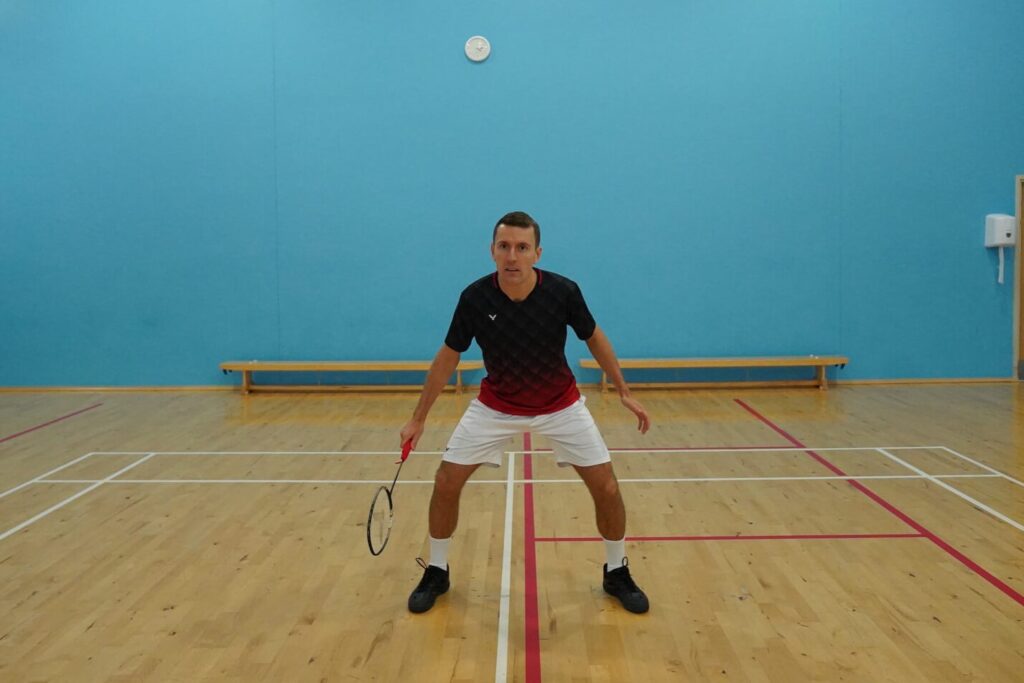
Movement To The Front Court
Before we get into the specific corners, there are 4 important things you need to learn for any simple movement to the front of the court:
- To always lunge on your racket leg – so your right leg if you’re right-handed and your left leg if you’re left-handed.
- To keep your torso and head upright, core strong, and legs bent to help you be more in control of your body when playing and recovering from the shot.
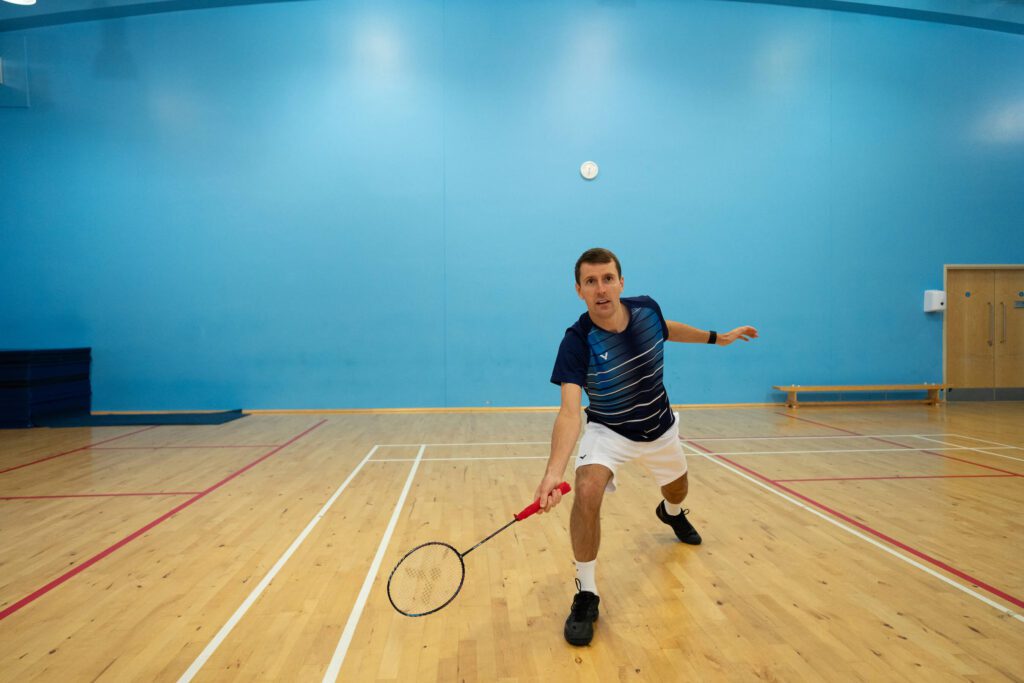
- To land the lunge with your heel to toe and with your toes facing the shuttle. Your knee also needs to be in line with your foot, and not collapsing inwards or outwards.
- To land your foot just before you strike the shuttle. If you land too early, you can’t adjust your positioning and if you land too late then you’re not in control of your body when hitting the shot.
💡 You want to get to a point where the movement becomes ingrained into your muscle memory so you can focus more on hitting the shuttle rather than what your feet are doing in a game.
Forehand Front Court
If you’re moving into the forehand front corner, you want to do a directional split step like this:
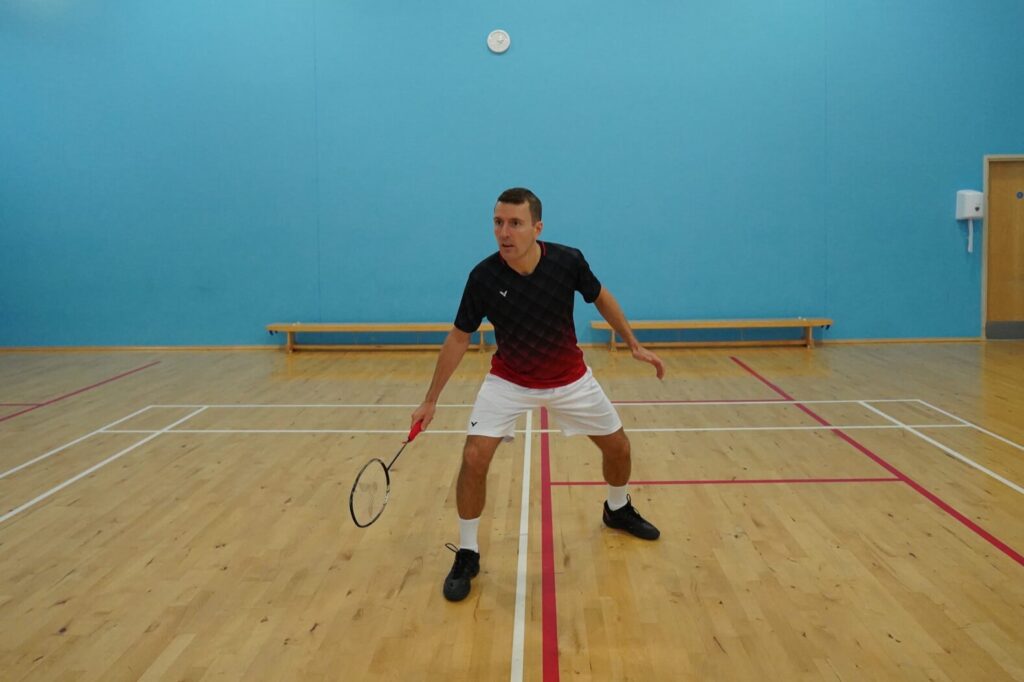
Then, bring your non-racket leg towards your racket leg in what we call a chasse step like this:
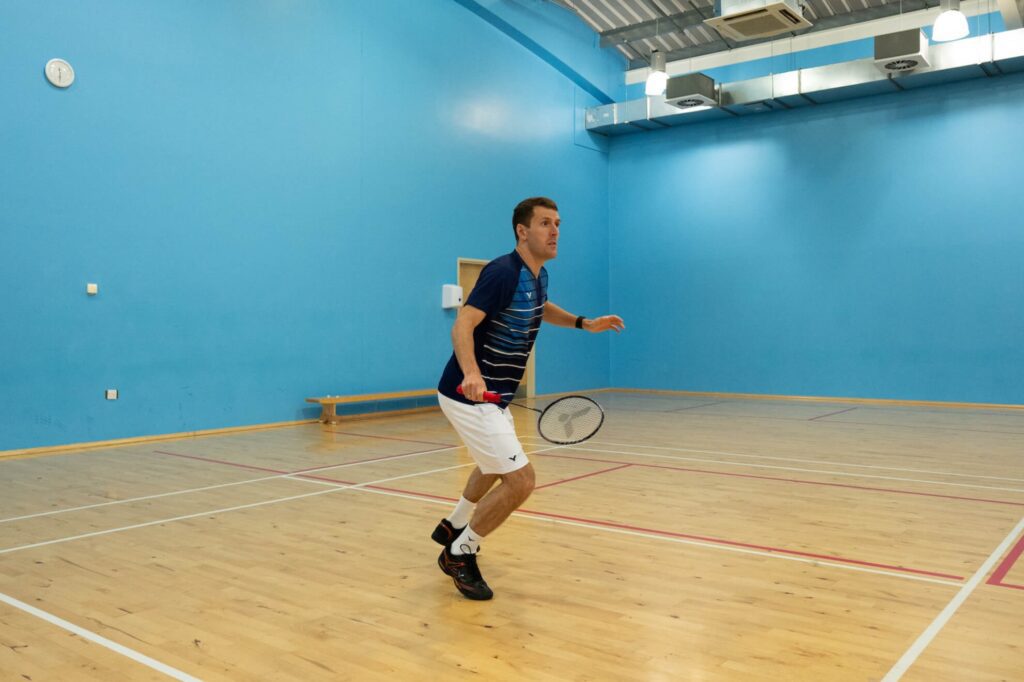
Finally, bring your racket leg forwards to lunge into the corner.

This is the same movement no matter if you’re coming from the middle, if you’re moving across the net, or coming from a doubles defensive position.
To recover, you would almost do the reverse of the movement you just did. So push out of the lunge with your racket leg, bringing your racket leg towards your non-racket leg and then step back to the middle.
Backhand Front Court
When moving to the backhand front corner, you want to do a directional split step like this:

Then, pivot on your non-racket leg and finally lunge into the corner with your racket leg. Again, this is the same no matter where you’re moving from.
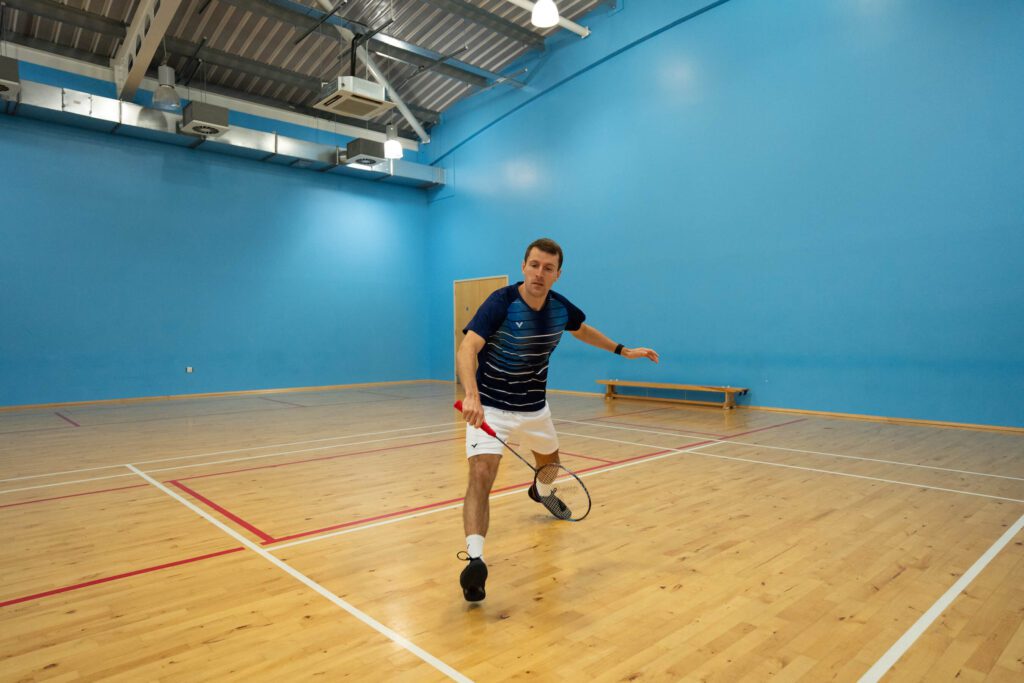
Getting more advanced, you can also do a full directional split step with your racket leg forwards if you are anticipating a shot to the net. You would then chasse after this and repeat the same lunge movement.
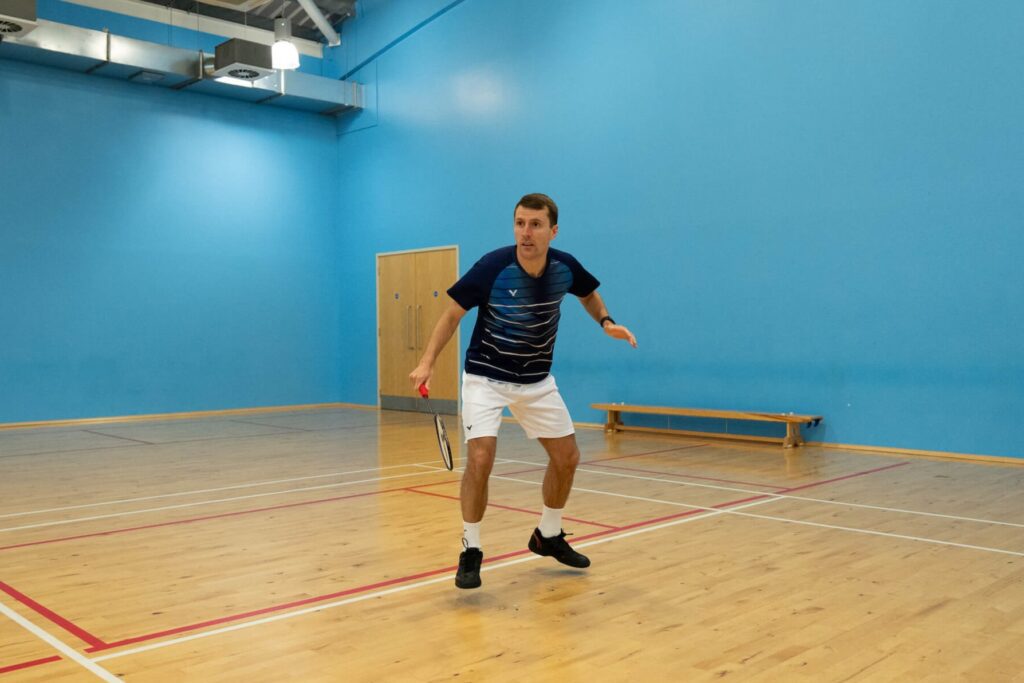
To recover, you again push off with your racket leg and bring it back round back to the centre position.
At the same time as you’re bringing your racket leg round, you would also do a small hop on your non-racket leg to provide the extra distance to get back to the middle.
Tactical Tip: If you have played a tight net shot and your opponent is taking it low down you might not need to fully recover to the middle. This is because the likely reply is another net shot, so if you don’t recover as much then you will be earlier onto the next shot! If your opponent does lift then you would still be able to recover back in time.
Movement To The Rear Court
Forehand Rear Court
There are actually 4 different movements you can use to get to the forehand rear court corner, but we’ll cover the most basic one here. We cover the other 3 more advanced forehand rear court footworks in this article here.
The rear court movement we are going to discuss here is the scissor kick. First, you do a directional split step towards the forehand rear court corner like this:
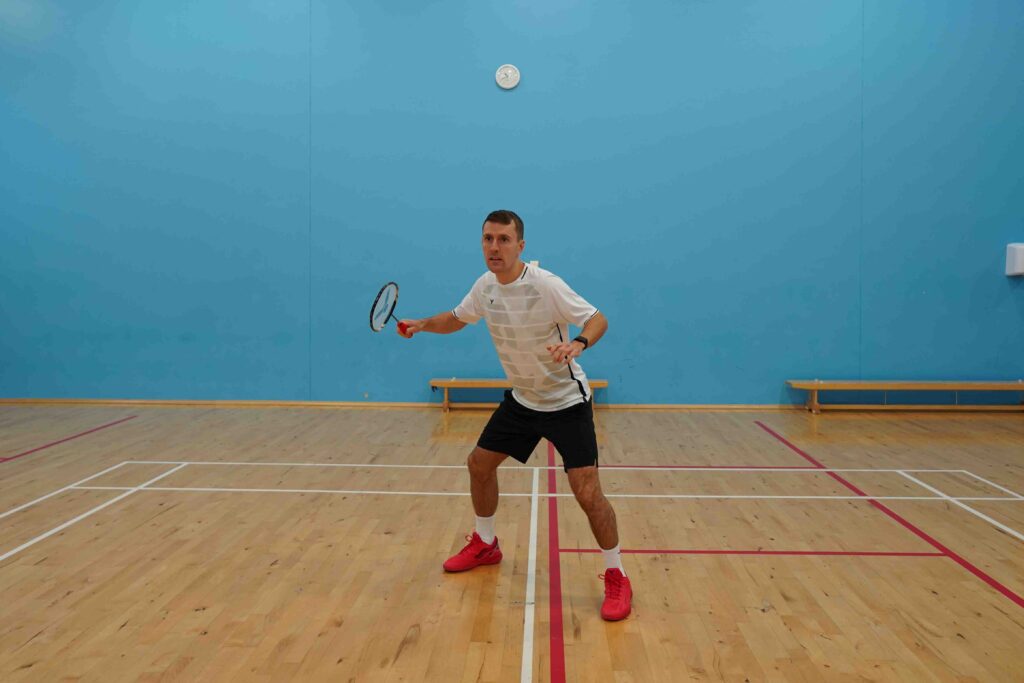
Then, chasse in the same direction to get into a position with your feet wider than shoulder width apart and your body facing sidewards like this:
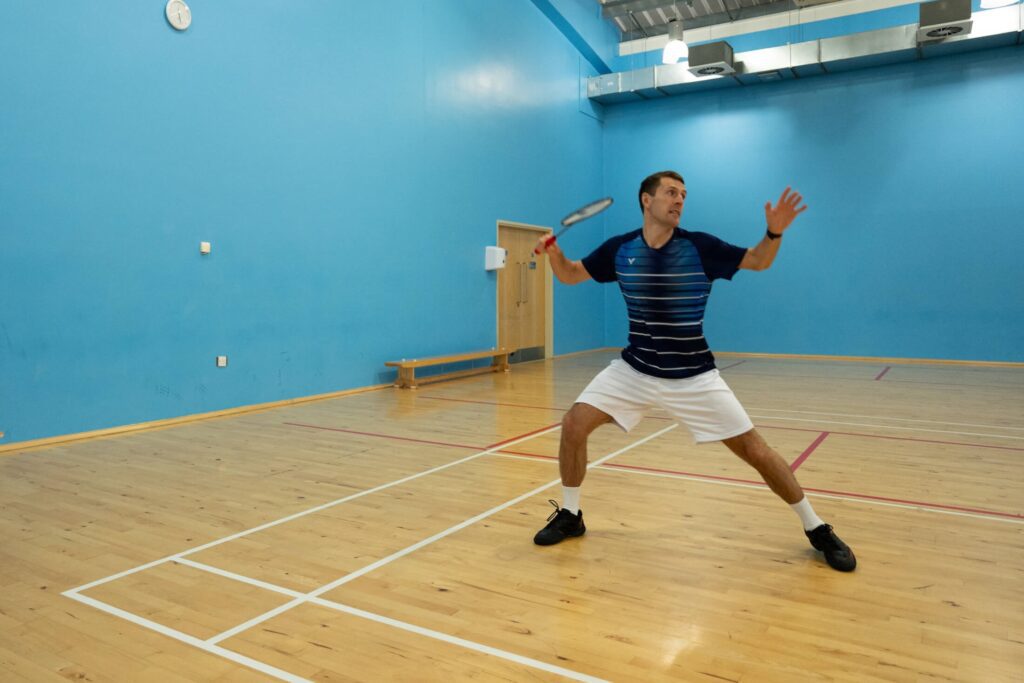
You want your racket leg to be loaded and then you push off this leg to perform a rotational jump before landing with your racket leg in front.
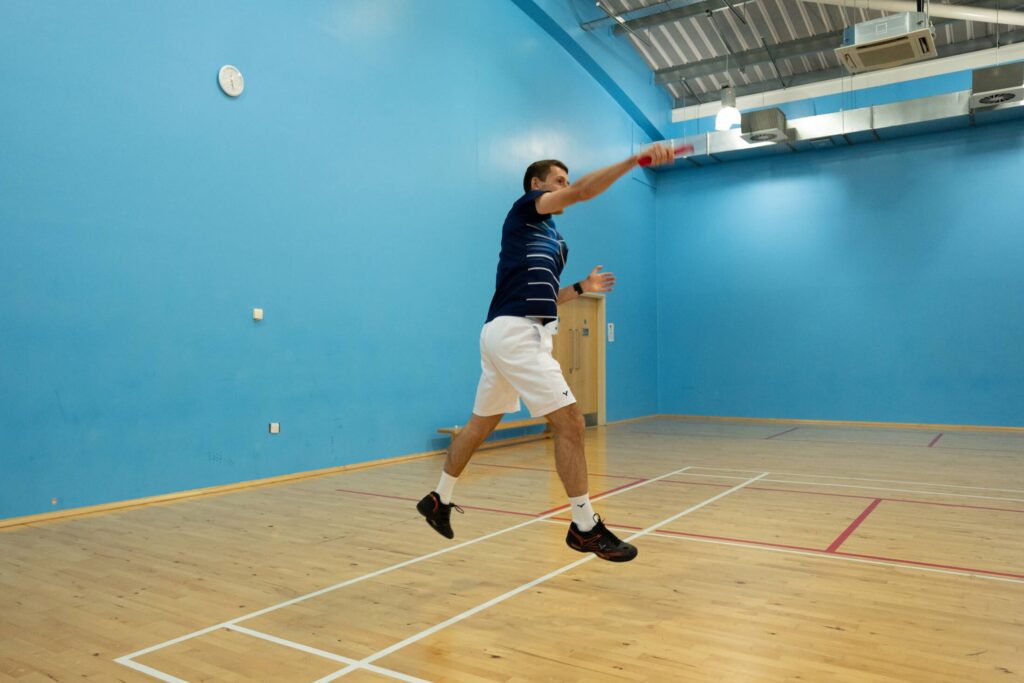
Rotating like this in your overhead action allows you to transfer your body weight so that you’re moving forwards after the shot. If you don’t use this rotation then you’re more likely to fall backwards after the shot, making you slower onto the next shot!
Make sure you also land with your legs slightly wider than shoulder width apart – this will help you remain on balance to recover quickly back to the middle or to the following shot.
Round The Head Rear Court
To move to most shots in the round the head rear court you would again use the scissor kick for this movement, but the movement towards the corner will be slightly different compared to the forehand side.
You start with a directional split step towards the round the head rear court corner like this:
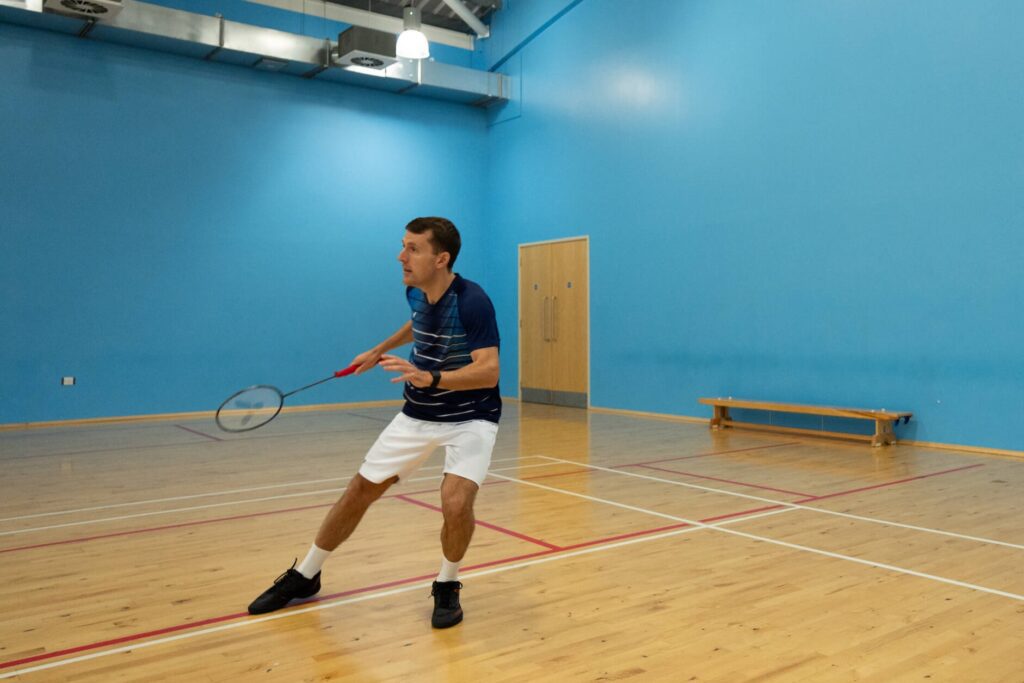
Then you push off your racket leg and pivot on your non-racket leg so you’re facing sideways. Then, jump up and do a scissor kick so you land like this:
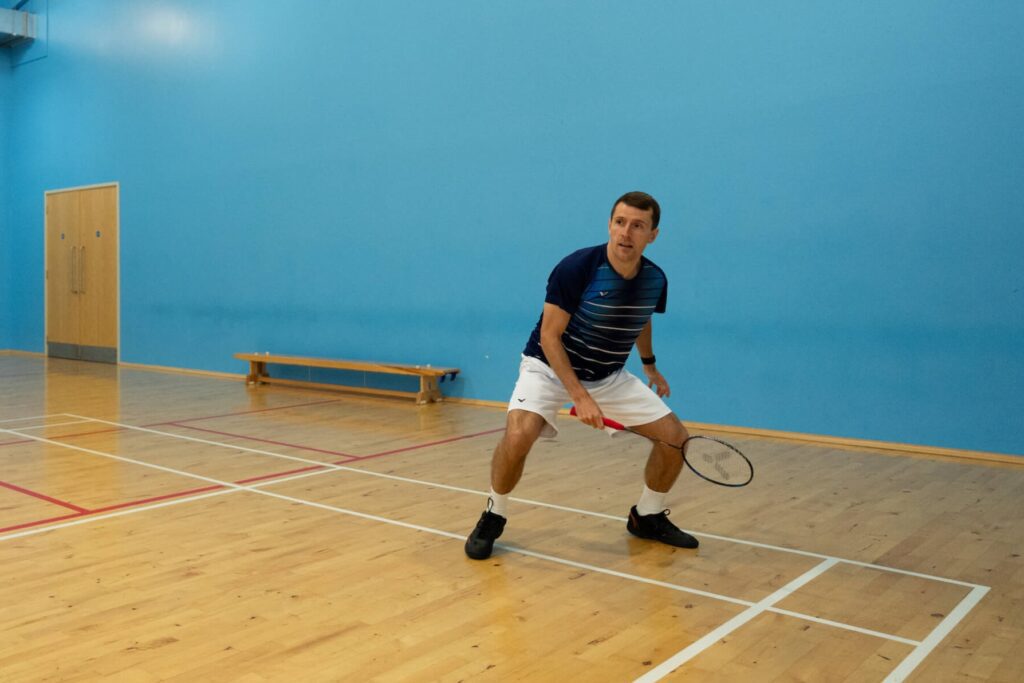
If you find that you struggle to reach the corner with this movement, you can try adding in a small chasse step before or after the pivot. But we’d really encourage you to minimise your steps as this will maximise your speed!
If you’re not early enough to do this scissor kick movement and need to take a backhand then this is a completely different movement – which we’ve done a separate full tutorial on here.
As a final tip, it’s important to keep your legs bent all the time in your movement and to utilise your non-racket leg to push off as well as your racket leg! This will really speed up your movement and make you a lot more efficient.
Learn More
You can also check out our full YouTube video below where we demonstrate each step of these footwork patterns for you!

